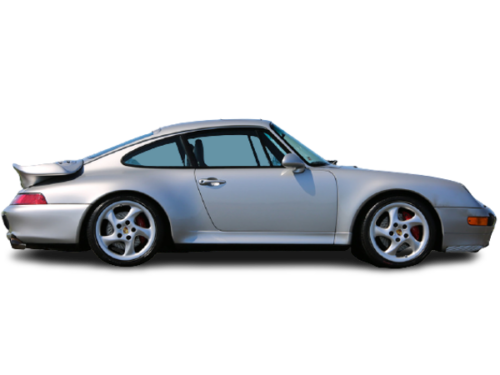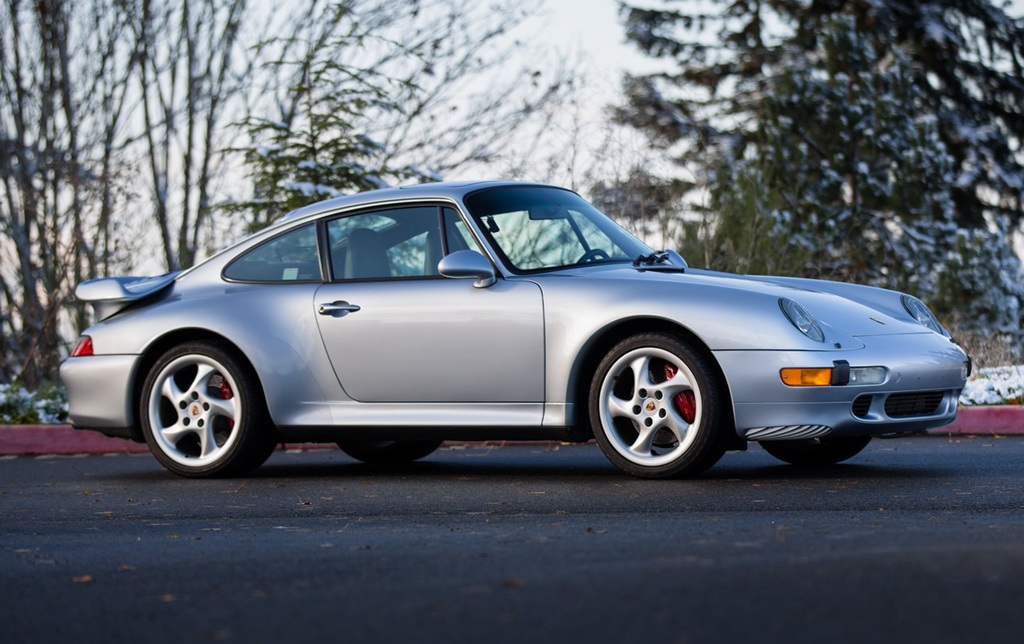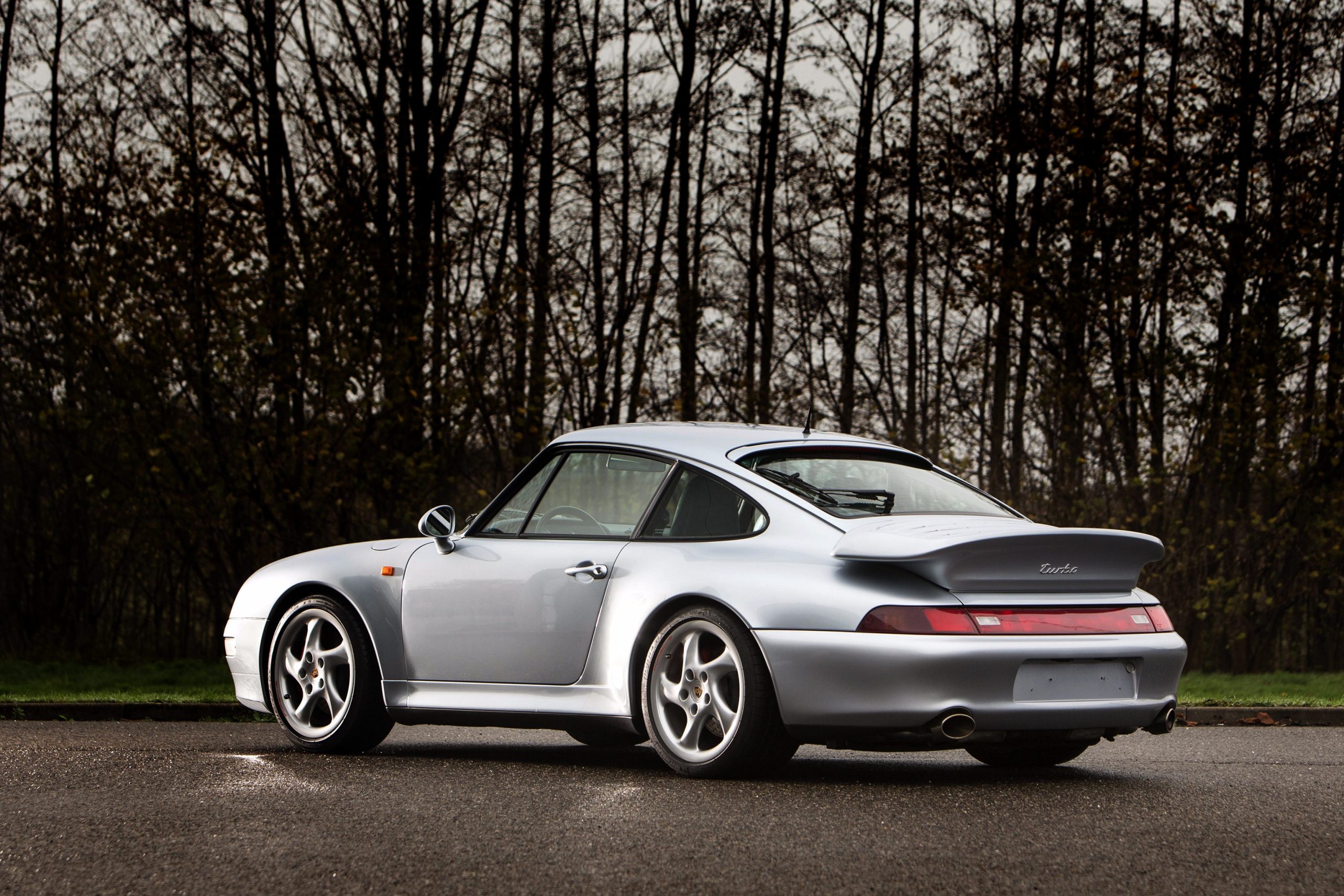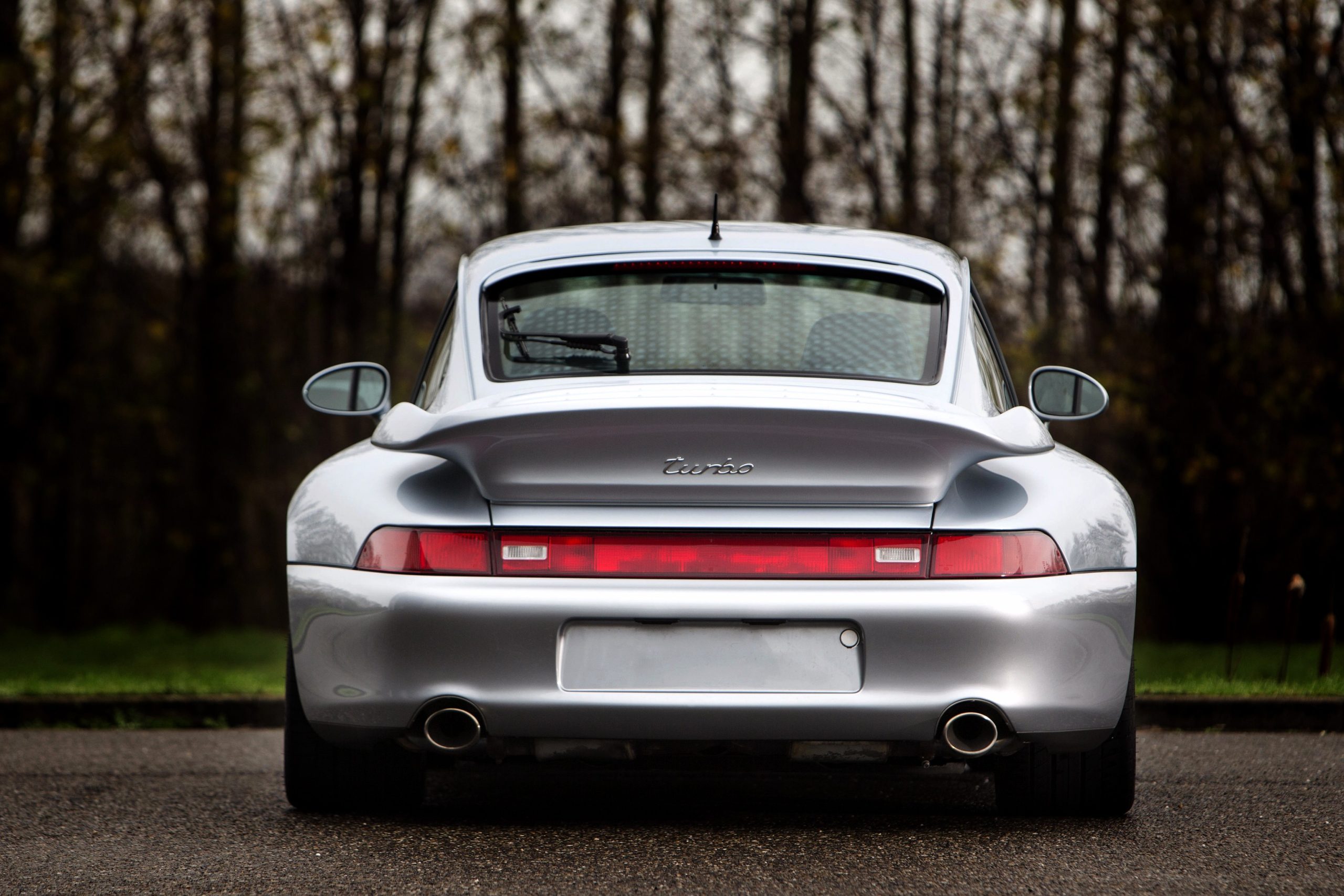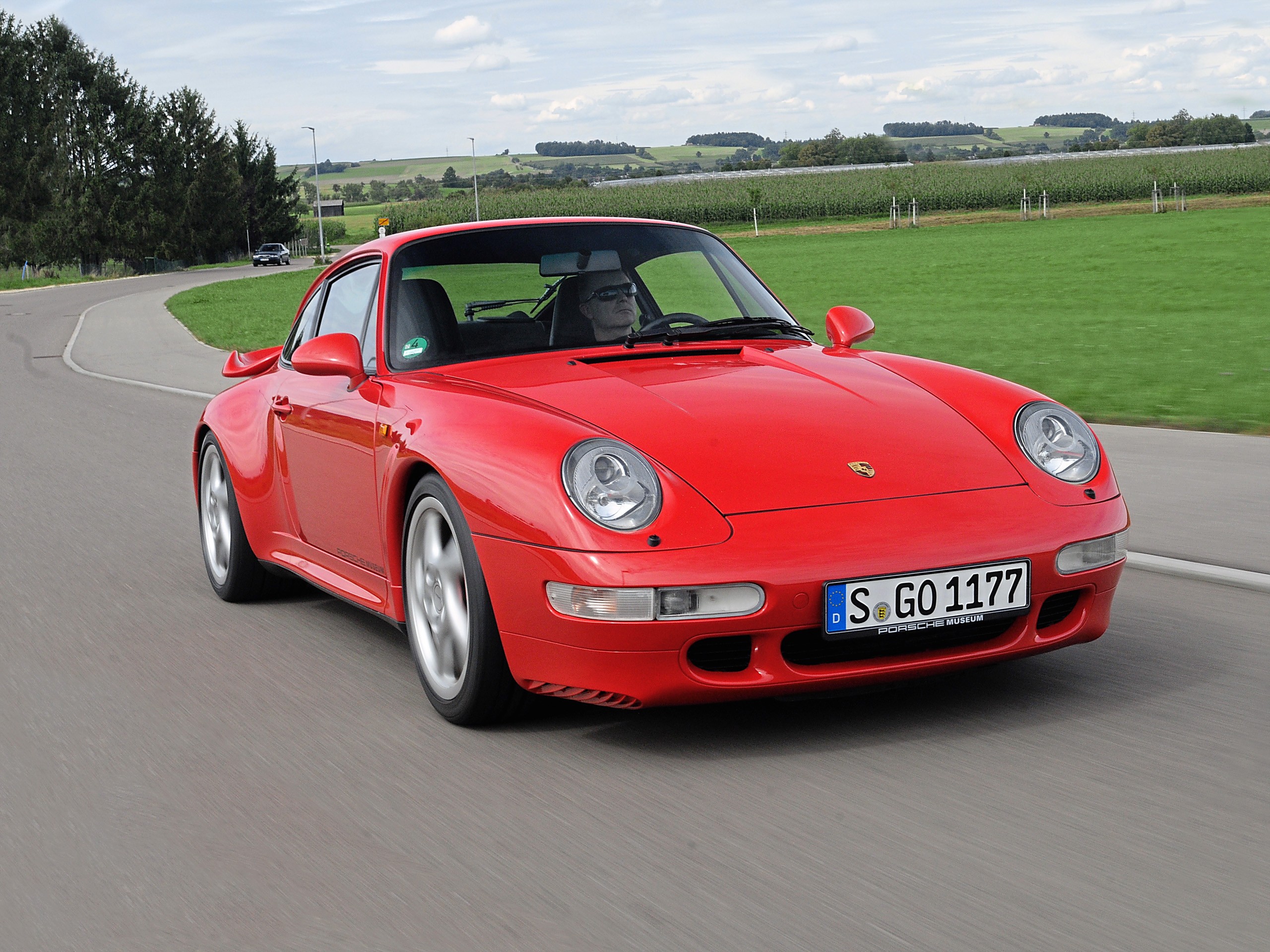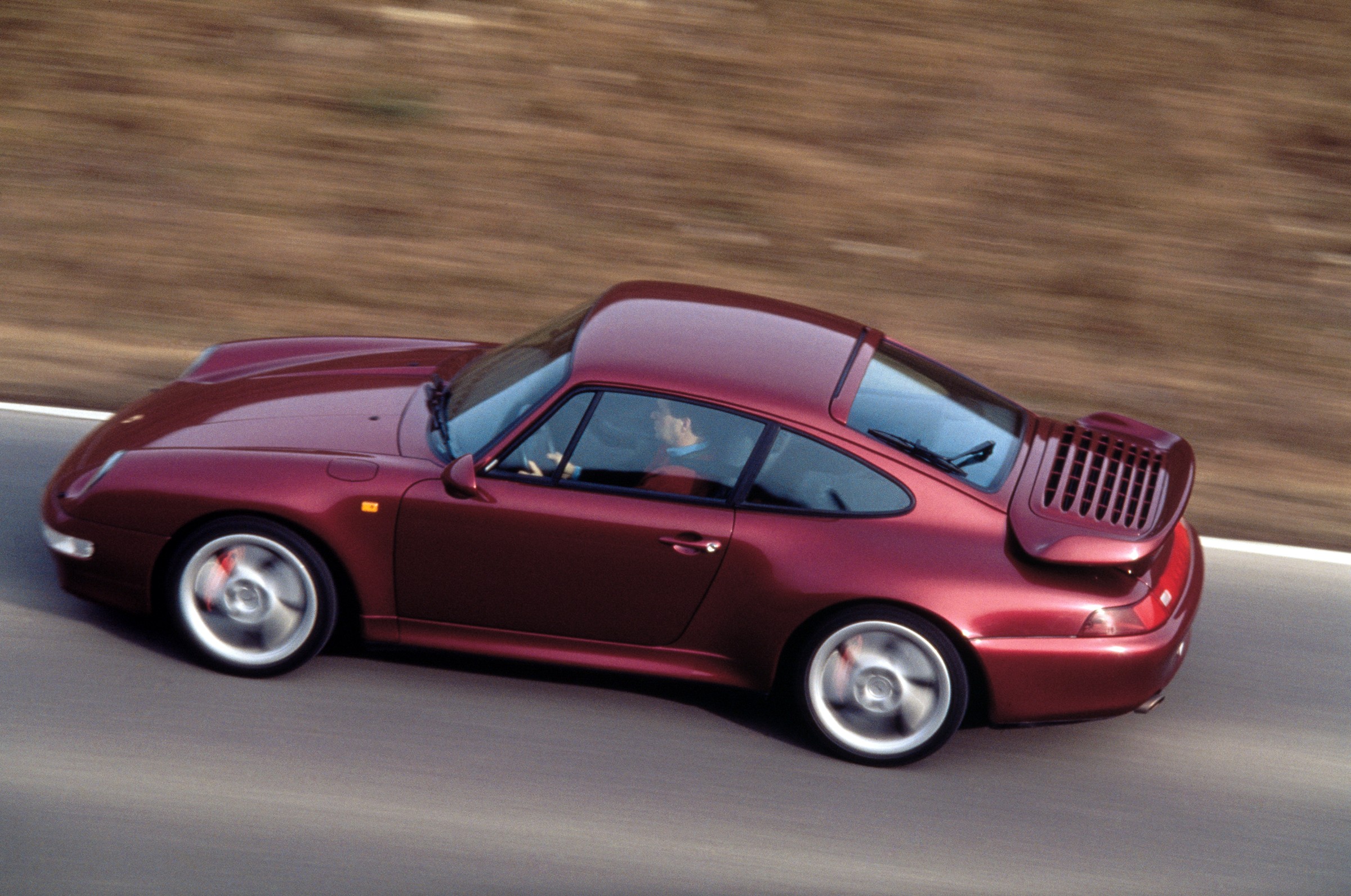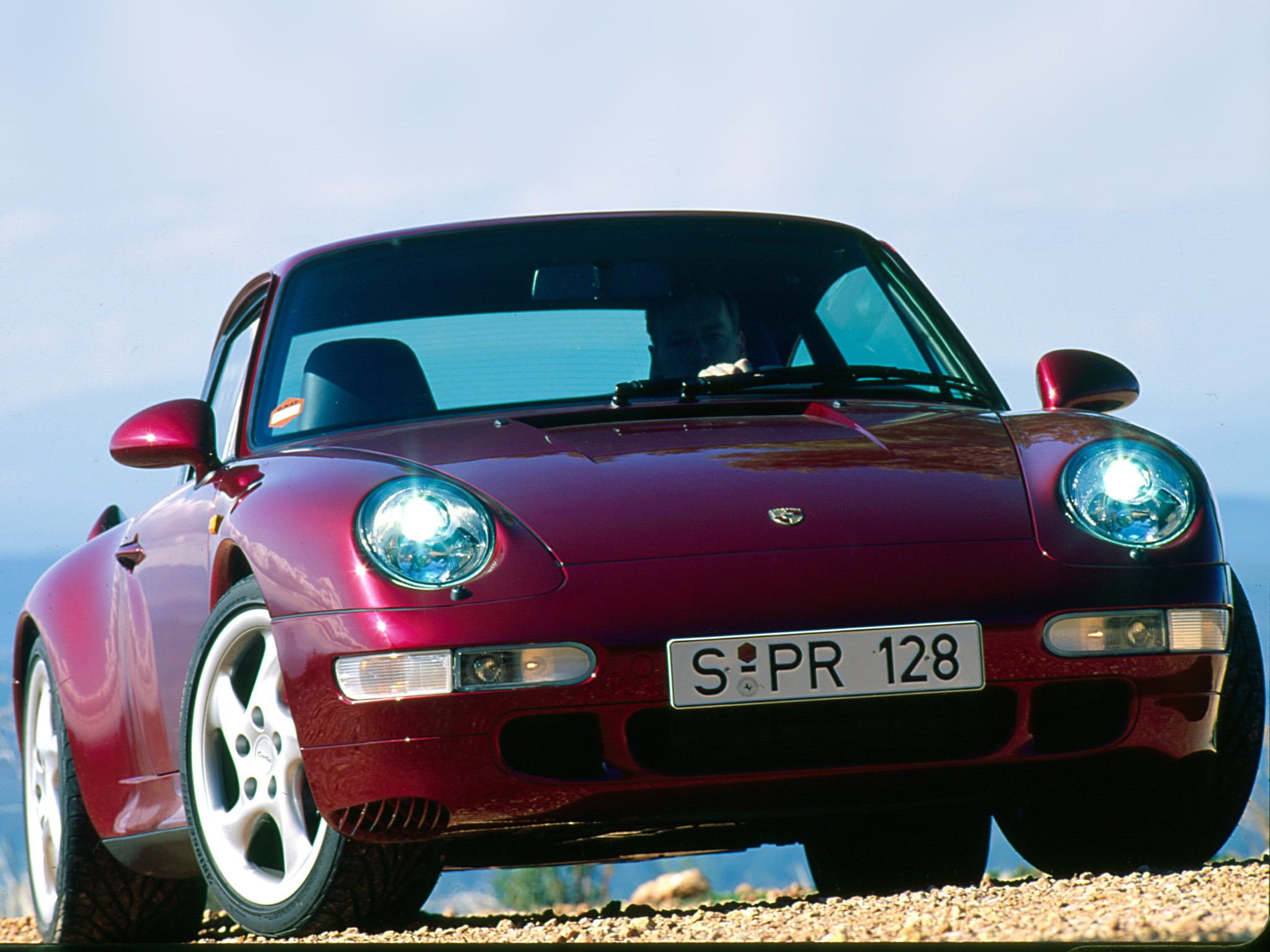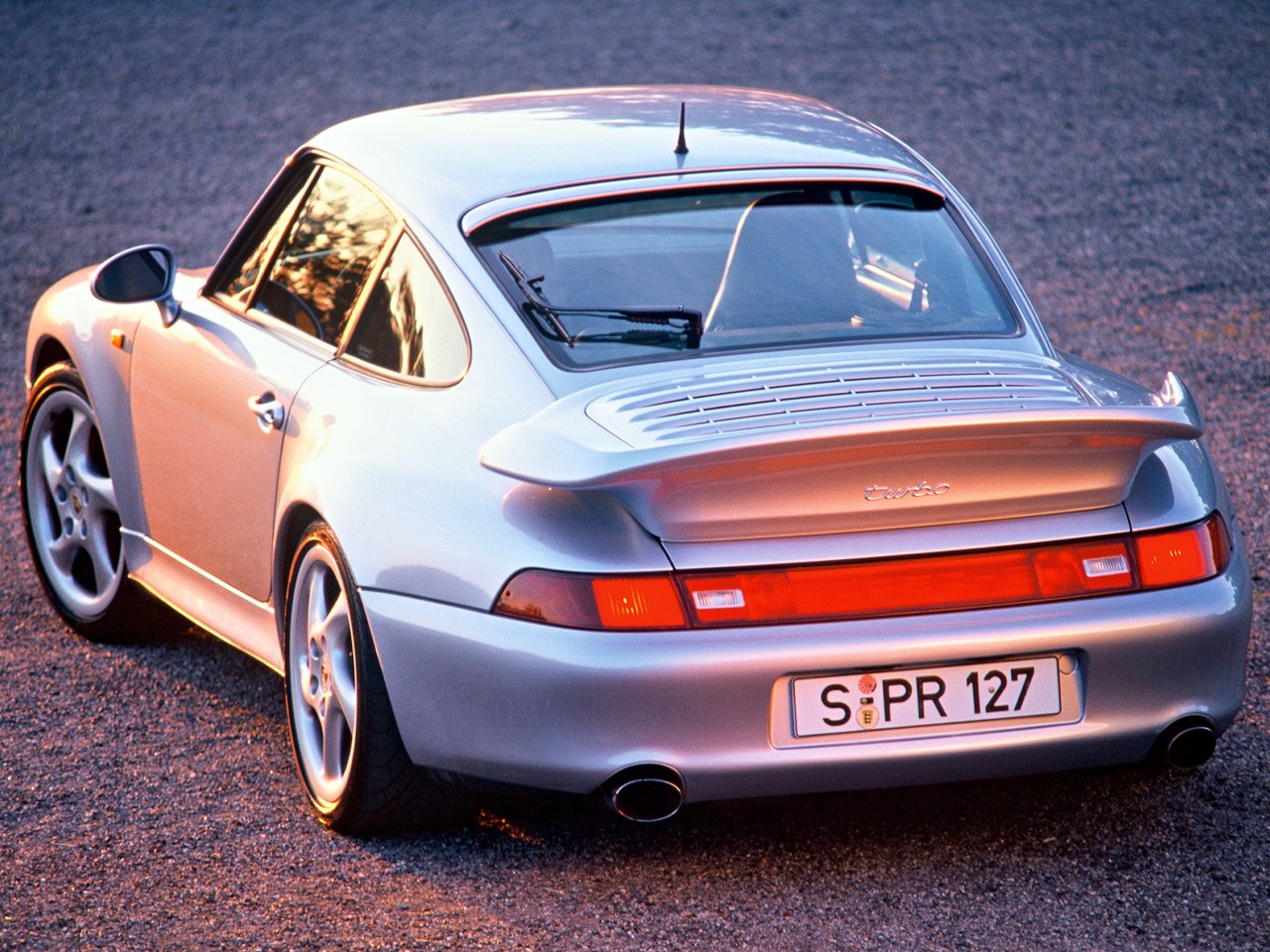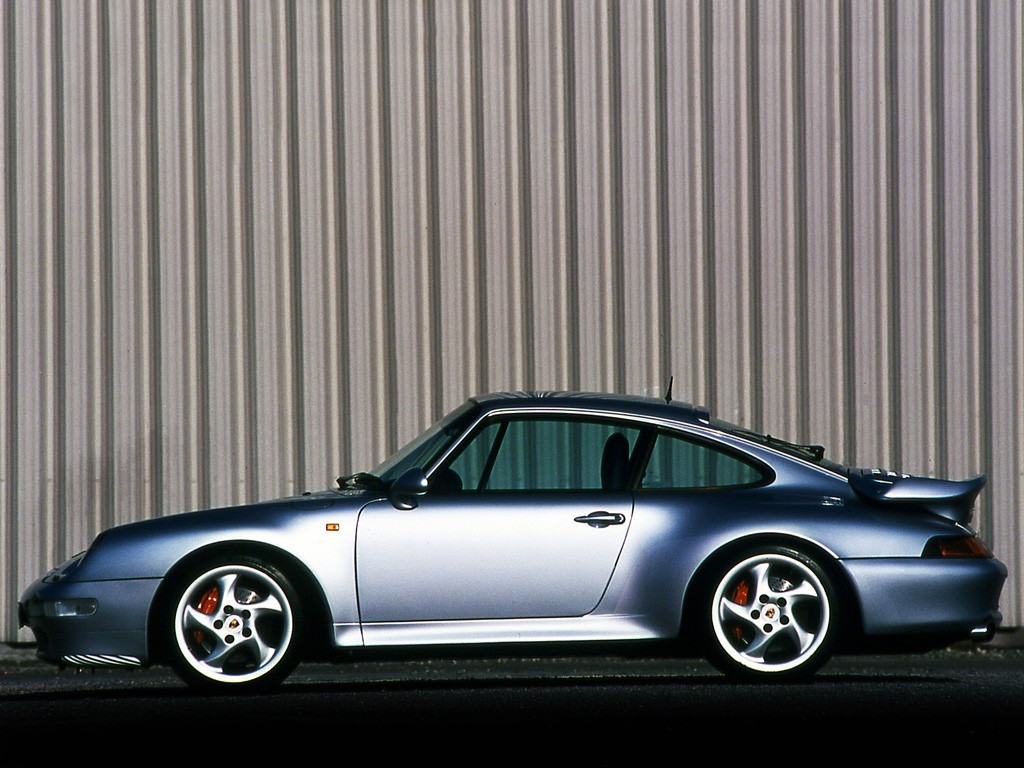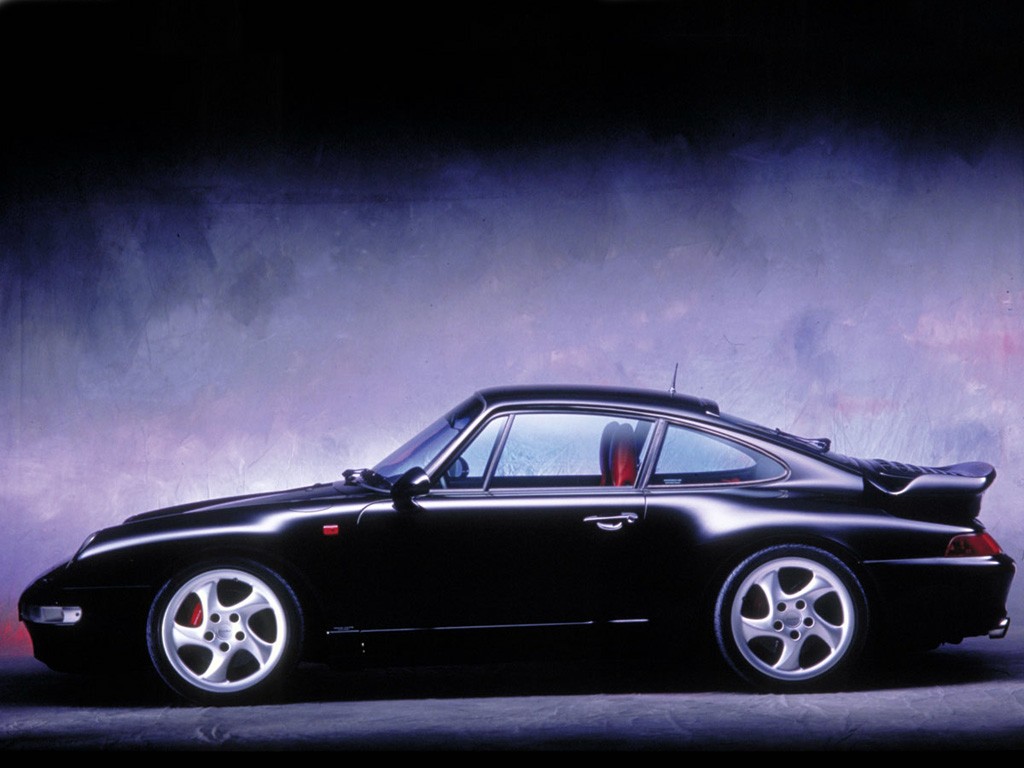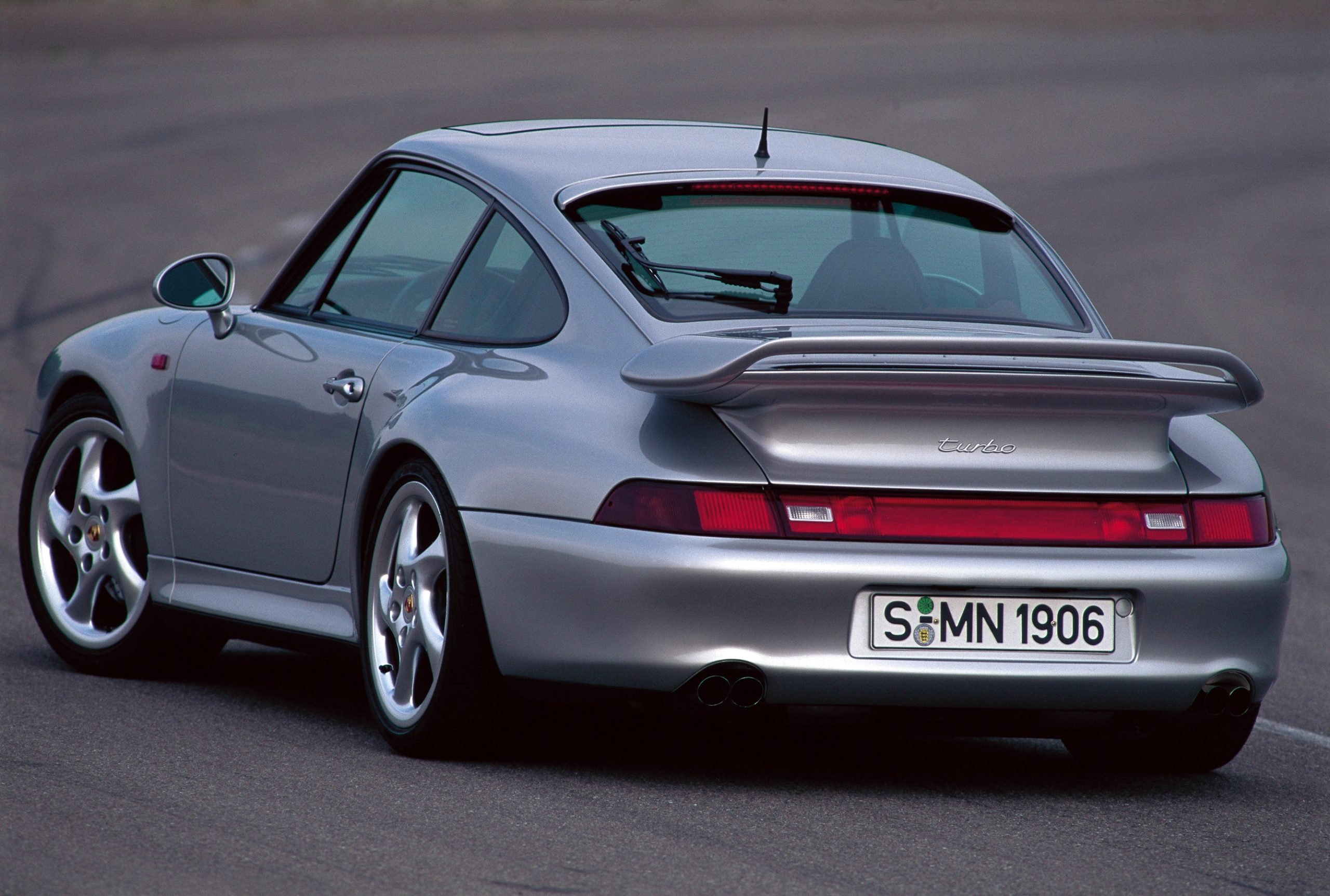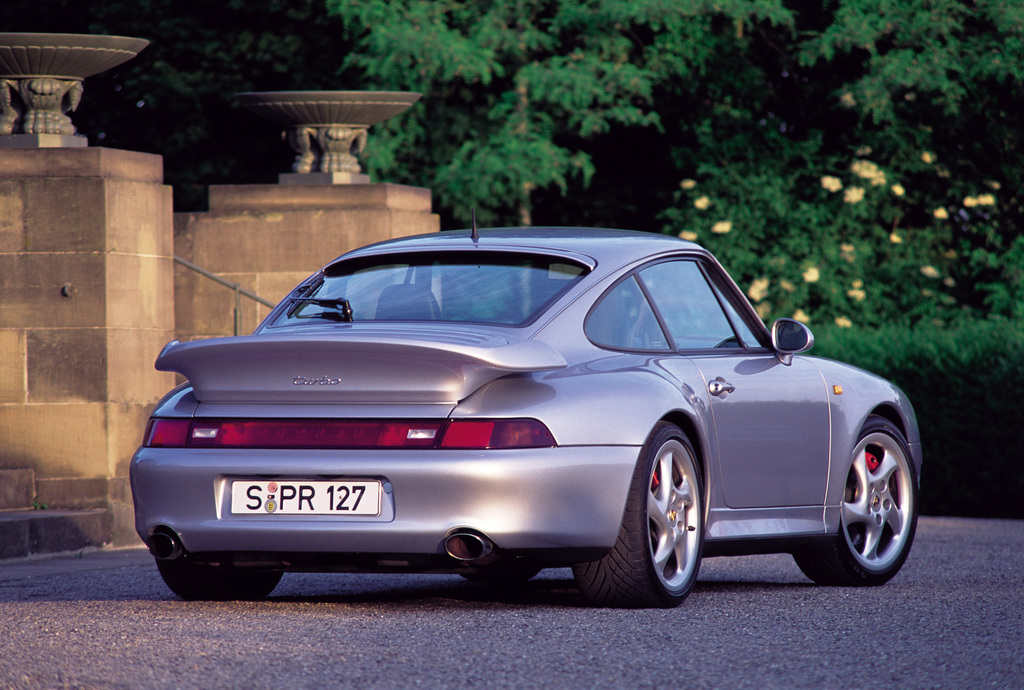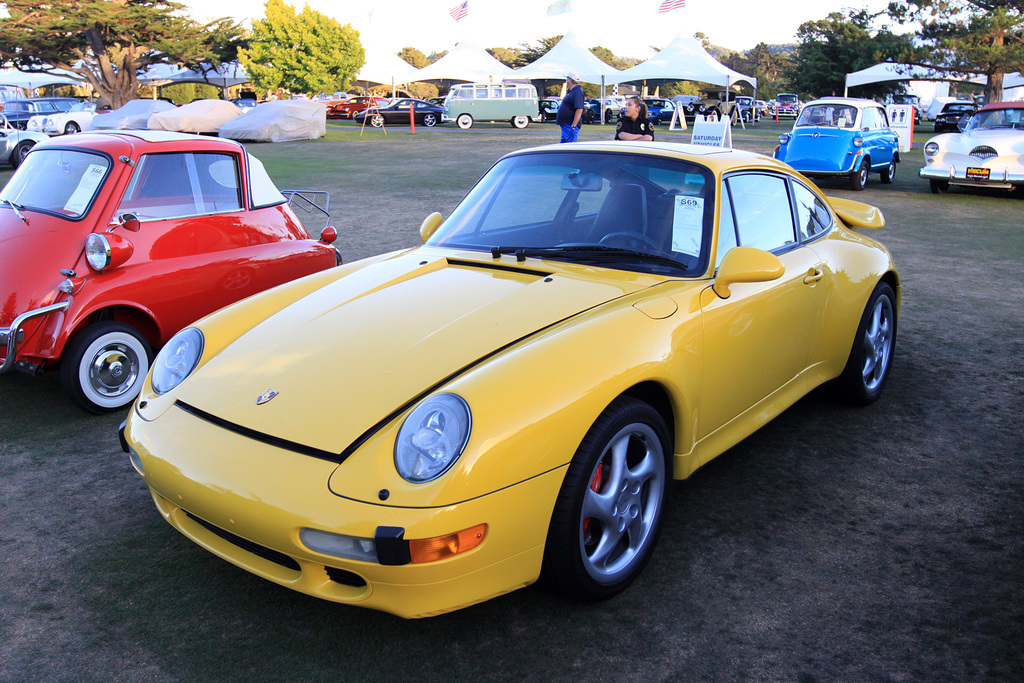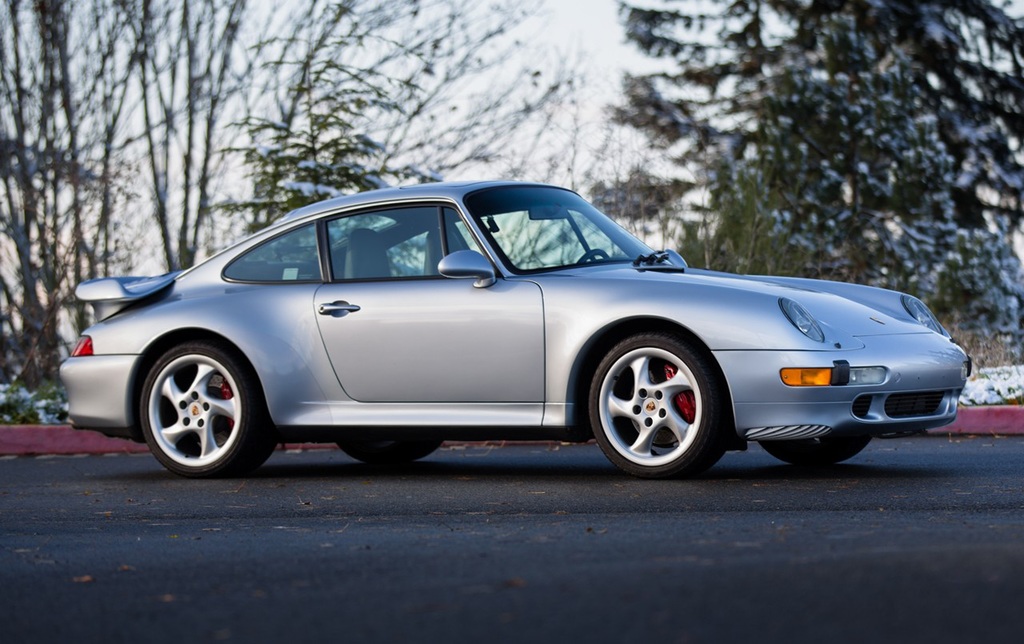(1995 – 1998) Porsche 911 Turbo (993) – Ultimate Guide
The 993 Turbo was available between late 1995 to 1998. Powered by a twin-turbocharged 3.6 liter flat six, it was rated at 402-horsepower. It’s distinguished easily from the rear, as the whale-tail spoiler is quite deep to house the intercoolers meant to cool the intake charge. This extra power might have been a handful for street drivers, so all-wheel drive from the 993 Carrera 4 added traction at all four corners. Approximately 6,000 coupes were made.
This is the last of the aircooled 911 turbos. Porsche introduced the Turbo for the 1995 model year. It had a 408-hp 3.6-liter engine utilizing two K16 turbochargers and all-wheel drive to effectively put the power to the ground. It was the first 911 Turbo with all-wheel drive, taken from the Porsche 959. Air-to-air intercoolers, electronic engine management, redesigned cylinder heads, and other modified engine internals completed the new engine.
The Turbo’s bodywork differs from the Carrera by widened rear wheel arches (about 6 cm), redesigned front and rear bumper moldings, and a fixed “whale tail” rear wing housing the intercoolers. New 18-inch (460 mm) alloy wheels with hollow spokes were standard. The car also had larger brakes than those on the base Carrera model.
Throughout the production run of the Turbo, two distinct differences existed. The 1997 and 1998 cars had these differences from the 1996 cars:
- Stronger transmission input shafts were used.
- The ECU was able to be flashed and modified (the 1996 model’s ECU was not modifiable).
- With the addition of a Porsche child seat, the passenger airbag was cut off.
- Motion sensors for the alarm were integrated into the map light above the rear view mirror.
- Standard wheel center caps had “turbo” embedded on them (the 1996 version had Porsche crests).
Although powered by a different engine, a limited production 993 Turbo Cabriolet was available in the early days of the 993 generation. A more powerful 993 Turbo S was also introduced in 1997.



